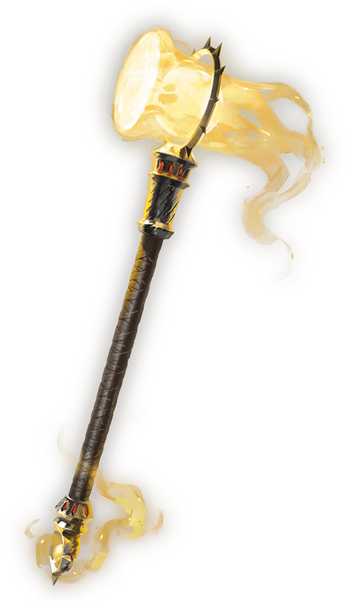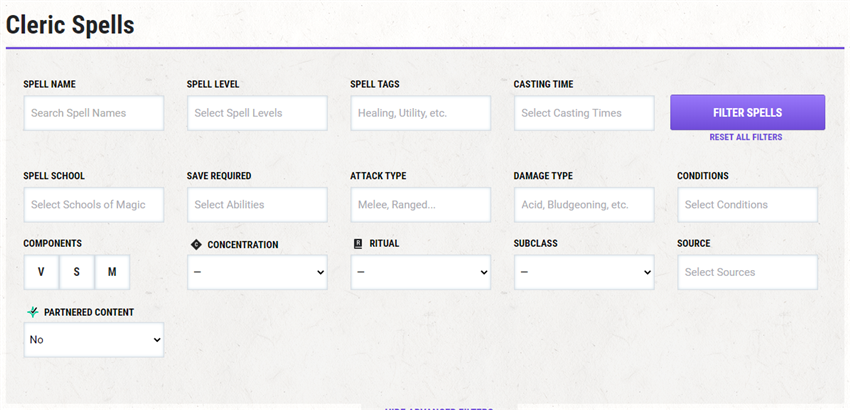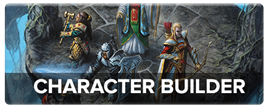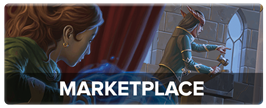 Spell Spotlight examines D&D’s best, worst, and most interesting spells, giving you the tools you need to play a spellcaster who knows exactly what they’re doing. Today, we’re looking at two iconic cleric spells: healing word and spiritual weapon. These spells define the low-level cleric experience, giving characters who master them highly flexible and mobile healing and combat abilities.
Spell Spotlight examines D&D’s best, worst, and most interesting spells, giving you the tools you need to play a spellcaster who knows exactly what they’re doing. Today, we’re looking at two iconic cleric spells: healing word and spiritual weapon. These spells define the low-level cleric experience, giving characters who master them highly flexible and mobile healing and combat abilities.
What is Healing Word?
Healing word is a 1st-level spell available to bards, clerics, druids, and Alchemist artificers. It allows you to heal a creature you can see within 60 feet a number of hit points equal to 1d4 + your spellcasting modifier. For most 1st-level casters, this is an average healing of 4 or 5 hit points. It isn’t quite as strong as cure wounds (which averages 6 or 7 hit points at the same level of play), but its ability to be cast from range and its bonus action casting time make it every bit as powerful as its more classic counterpart.
Though at low levels, the difference between 1d4 of healing and 1d8 of healing may be the difference between healing to half health and healing to full health, this minor distinction practically disappears by the time you and your party reaches 3rd level. This is especially true if you’re a Life domain cleric; your Disciple of Life and Blessed Healer features make healing spells so useful that it hardly matters how much healing the spell itself provides. The mere fact that it heals anything is enough. For example, when casting healing word at 1st level, your Disciple of Life feature adds an extra 3 points of healing—that static bonus nearly doubles the amount of healing the spell provides normally!
A range of 60 feet gives you the ability to heal an injured friend from far away, as long as you have line of sight. Most encounter areas in published D&D adventures aren’t larger than 60 feet in any direction, especially at low levels, so you can effectively heal a friend from anywhere on the battlefield. Even more attractive than its range, however, is its rapid casting time. Since healing word has a casting time of 1 bonus action, as opposed to 1 action, it is incredibly useful for casters who have something else to do as their action. See “Strategies, Synergies, and Struggles” below for a closer look at the power of the bonus action.
What is Spiritual Weapon?
 Spiritual weapon is a 2nd-level spell available to clerics (and Oath of Conquest paladins) that allows them to conjure a weapon that can fly through the air and strike down their foes. This spell deals only a small amount of damage when it’s first cast, dealing only 1d8 + spellcasting modifier damage if it hits. The spell scorching ray is a good spell to compare it to, even though scorching ray is only available to wizards and sorcerers, while spiritual weapon is largely only available to clerics.
Spiritual weapon is a 2nd-level spell available to clerics (and Oath of Conquest paladins) that allows them to conjure a weapon that can fly through the air and strike down their foes. This spell deals only a small amount of damage when it’s first cast, dealing only 1d8 + spellcasting modifier damage if it hits. The spell scorching ray is a good spell to compare it to, even though scorching ray is only available to wizards and sorcerers, while spiritual weapon is largely only available to clerics.
Scorching ray deals damage in large spikes, dealing up to 6d6 fire damage on the turn it’s cast to up to three targets within 120 feet of the caster. On the other hand, spiritual weapon deals a smaller amount of damage spread out over up to a full minute of combat, and doesn’t require concentration. It can be conjured at any point within 60 feet of the caster, making its range less potent than scorching ray, but as noted above, 60 feet is usually more than enough room in small, low-level arenas. If that range isn’t enough, the weapon can move up to 20 feet on each of your turns. The spell’s duration and maneuverability allows it to deal up to a maximum of 10d8 + ten times the caster’s spellcasting modifier over the course of an exceptionally long battle.
A combat encounter that lasts a whole minute of in-game time (that’s ten full rounds of combat!) is an outlandish rarity, however. Few battles last more than 3 rounds, so assuming that the spell deals a total of 3d8 + three times the caster’s spellcasting modifier, its damage is comparable to other 2nd-level spells—an average of 22 damage compared to scorching ray’s average of 21 damage. Spreading the damage out over several rounds is a definite drawback, but spiritual weapon’s versatility (and its hard-to-resist force damage type) make it easy to overlook the consequences its slow-and-steady approach to dealing damage.
Where this spell really shines, however, is in its bonus action casting time and the ability to command it to attack as a bonus action on each of your turns. Most clerics only have a small handful of spells or class features that grant them a bonus action, making it easy to justify using your bonus action to attack with your spiritual weapon on every single turn in combat.
Spellcasting Strategies and Struggles
On the surface, healing word and spiritual weapon are totally different spells; one heals allies, the other hurts enemies. However, there are two main traits that unify these spells: the first is their 60-foot range. These two spells allow the caster to heal and fight well beyond the reach of their hands. With these spells, the battlefield is their oyster.
These spell’s other unifying power, their bonus action casting time, is their greatest strength—and also their greatest weakness. A bonus action casting time is powerful on a turn by turn basis. Being able to cast a healing or damage spell as a bonus action frees up your action for other things—such as making a weapon attack, casting a cantrip, hiding, searching for something, or any number of other Actions in Combat.
Clerics and bards can take the Attack action (which at low levels is often nearly as powerful as a fighter or paladin’s attack), and druids can do the same, especially if they have a quarterstaff empowered by the shillelagh cantrip. Having an action to use after spending a bonus action to heal is useful casters who know offensive cantrips like sacred flame for clerics, primal savagery for druids, or vicious mockery for bards.
Rules Tip: Casting Spells as a Bonus Action
When you cast a spell as a bonus action, you can’t cast another spell in the same turn unless that spell is a cantrip that you cast as an action. Similarly, a bonus action isn’t “inferior” to an action. A spell that has a casting time of 1 bonus action can’t be cast as an action, even though it may seem like an action is superior to a bonus action. Allowing a bonus action spell to be cast as an action is a reasonable house rule to propose to your group, but it’s not part of the official D&D rules.

Since both healing word and spiritual weapon have bonus action casting times, however, this means that they can’t be used together on the same turn. This is even true for the turns after you’ve cast spiritual weapon, since you need to use your bonus action to attack with the weapon on future turns. This bonus action overload means that clerics need to decide whether they want to lean into the role of healing, or the role of offense. You could lessen the impact of this choice by choosing to prepare the slightly less useful cure wounds spell instead of healing word.
Bards and druids have access to healing word, so they’re impacted by this bonus action bottleneck, too! Even though they don’t have spiritual weapon on their class’s spell lists, they still have other spells and class features that require a bonus action to use. A bard can’t cast healing word and give someone Bardic Inspiration. A druid can’t cast healing word and also cast shillelagh—though they can attack with a weapon affected by shillelagh once the spell has been cast.
If you’re playing a spellcaster and want to create a powerful character, try to make sure you can reliably do something with both your action and your bonus action on a turn. You don’t have to always use both (since this can slow down play and hog the spotlight) but having the option to do two cool things per turn instead of one makes you more likely to have fun and effective turns. Bonus action spells can help you do that if you don’t have many class features that can be used as a bonus action (e.g., Bardic Inspiration, Combat Wild Shape, etc.).

If you want to see what spells you can cast as a bonus action, go the Game Rules dropdown at the top of the page, find the Spells header, and click on your class’s name. This will take you to your class’s fully searchable spell list. Once there, open the Show Advanced Filters menu and type “1 Bonus Action” into the Casting Time bar. Hit Filter Spells, and that will show you all the spells on your class’s spell list that can be cast as a bonus action. Have fun discovering small combos, like casting word of radiance as an action on a group of enemies surrounding you, and then immediately casting sanctuary on yourself as a bonus action to avoid retaliation.
What are your favorite bonus action + action combos? What other spells do you want to see spotlighted in Spell Spotlight? Let us know in the comments!
Create A Brand-New Adventurer Acquire New Powers and Adventures Browse All Your D&D Content
 James Haeck is the lead writer for D&D Beyond, the co-author of Waterdeep: Dragon Heist, Baldur's Gate: Descent into Avernus, and the Critical Role Explorer's Guide to Wildemount, a member of the Guild Adepts, and a freelance writer for Wizards of the Coast, the D&D Adventurers League, and other RPG companies. He lives in Seattle, Washington with his fiancée Hannah and their animal companions Mei and Marzipan. You can find him wasting time on Twitter at @jamesjhaeck.
James Haeck is the lead writer for D&D Beyond, the co-author of Waterdeep: Dragon Heist, Baldur's Gate: Descent into Avernus, and the Critical Role Explorer's Guide to Wildemount, a member of the Guild Adepts, and a freelance writer for Wizards of the Coast, the D&D Adventurers League, and other RPG companies. He lives in Seattle, Washington with his fiancée Hannah and their animal companions Mei and Marzipan. You can find him wasting time on Twitter at @jamesjhaeck.











-
View User Profile
-
Send Message
Posted Jun 24, 2020I cast Searing Smite on my WarHammer and give no mercy!
-
View User Profile
-
Send Message
Posted Jun 24, 2020Speaking of Disciple of Life... is that going to get integrated yet?
-
View User Profile
-
Send Message
Posted Jun 24, 2020Most players I know tend to reserve healing word for the unconscious, especially once they're past level 1. Healing someone from 2 HP to 7 HP isn't likely to keep them from going down against the next hit, but healing someone from 0 HP to 5 HP can mean the difference between life and death.
-
View User Profile
-
Send Message
Posted Jun 24, 2020Having fun using those EGtW pics huh?
-
View User Profile
-
Send Message
Posted Jun 24, 2020thats the only reason i ever take healing word, especially on druids since they dont usually have something to do with their bonus actions
-
View User Profile
-
Send Message
Posted Jun 24, 2020Hmm, one of my favorite action plus bonus action combos is probably Eldritch Blast followed by a quickened Eldritch Blast. It's the simple pleasures that make me happy. I suppose spiritual weapon if you start to run low on Sorcerery points (be a divine soul Sorcerer, it helps).
Honorable mentions include:
Twinned Haste + quickened Eldritch blast + a free attack with a weapon
Quickened scorching Ray + twinned firebolt is also high up when you have two targets. Bonus points if you are a draconic bloodline Sorcerer.
Using a Samurai's Fighting Spirit + the attack action (+ the attack action again cause that seems like a great time to action surge). Bonus points if you are also an assassin Rogue and you are attacking a suprised enemy. That's just silly. Combat it likely over after that nonsense.
-
View User Profile
-
Send Message
Posted Jun 24, 2020Not all Clerics are DoL , as far as HW and SW are the most Useless spells around and so under powered they are not worth even learning NOT EVERYONE always runs as a DoL cleric and clerics should not me FORCED to BE DoL just to heal a good amount . the average the healing word heals 2 to 4 hp witch is USELESS
SW over ALL 1 or 2 damage witch is also a waste of spell slot and People who heal with out being DoL should not have to deal with weak healing spells because 5th ed spell are under powered Especially healing
they need to go back to 3.5 spells and Rules when the game was FUN for DM and Players alike not like it is now , it seems like D&D they Need to go back to REAL D&D the way Margaret West and Tracy Hickman had it and quit trying to water down ALL spell casters and healers to where no one want to play them and do away with spell casting the all ready removed Prestige Classes and made Multi classing or cross classing Useless and trying to force player to Have only 1 class
-
View User Profile
-
Send Message
Posted Jun 24, 2020One note- Spiritual Weapon does not require concentration, which really boosts its utility because you can maintain Bless, Aid, or some other buff spell at the same time.
-
View User Profile
-
Send Message
Posted Jun 24, 2020I like that they are restarting this series.
-
View User Profile
-
Send Message
Posted Jun 25, 2020Woah, friend, there's a lot to unpack there. I'll preface all of this by saying: If you're so adamant about returning to "the good ol' days" then go and do so. Everyone else is quite happy with 5e, and willing to accept it with all of its flaws. Nobody is forcing you to be here on DnDBeyond or to play fifth edition. While WotC is no longer producing 3.x content, there are plenty of others that are.
To your points, however, I really wouldn't say that either spell is necessarily under-powered. In fact, any time I'm playing a cleric (or DMing an NPC with access to cleric spells), Spiritual weapon is always a go-to. It doesn't require concentration and deals more damage than a mace, which means that I can have both it and a more potent spell up at the same time and still make effectively as many attacks as a fighter at tiers 1 and 2.
Healing word is a first-level spell, so you can't complain that it's been "watered down" or what-have-you. It's balanced so that 1st and 2nd level casters can use it without it always healing everyone to full. With most casters, it heals 5 damage on average, assuming a +2 or 3 in their primary stat. At 1st level, that gets pretty close to healing a wizard to full health, and gives a fighter about half of their hit points. There are diminishing returns at higher levels, of course, but that's the case with upcasting any spell, or using any lower level spell at higher tiers of play. Magic Missile, for example, deals an average of 10 damage to one target at first level. That is enough to instantly vaporize many horde-type monsters you fight at first and second levels. However, it does nothing against an Ancient Red Dragon. Does that mean that Magic Missile is underpowered, and that 5e has a design flaw? No! It means you're trying to drain the ocean with a thimble and complaining that your thimble has a problem.
You also claim that Life Domain is basically required for a cleric to sufficiently heal. That's simply not true. With spells such as Mass Healing Word, which can double the healing put out by a Healing Word of similar level (albeit in small doses), how can you say that? If you have two party members knocked unconscious and one a single hit from being downed, a single bonus action and a third level spell slot and you have completely restored functionality to two teammates and possibly bought a third one more turn, which might be enough to finish off whatever you're fighting. Once your party gets into tier 3, there really isn't going to be much that healing can do anyway. Either whatever you're fighting is going to down a character in a turn or two or you'll kill it in equally as much time. However, if you'd like, you can drop a 6th level slot on a Heal, which probably instantly heals to full a Wizard of that level or could restore a fighter to enough health to tank a volley of blows from all but the most deadly of foes. And of course Mass Heal restores more hit points than even a 20th level party has a right to possess.
[REDACTED]
-
View User Profile
-
Send Message
Posted Jun 25, 2020I hope disciple of life gets added!
-
View User Profile
-
Send Message
Posted Jun 25, 2020I gott a say. My Alch still wishes he got spiritaul weapon, or something similiar to it. (flaming sphere doens't really cut it)
love the spells though
-
View User Profile
-
Send Message
Posted Jun 25, 2020Why's that? Because Flaming Sphere does fire damage or because it's a saving throw rather than an attack roll?
-
View User Profile
-
Send Message
Posted Jun 25, 2020I'm not sure what you mean. The Life Domain for clerics is available for everyone; you don't even have to purchase any books for it.
-
View User Profile
-
Send Message
Posted Jun 25, 2020I really enjoyed this in-depth analysis and spell-specific strategy article. Very insightful, can't wait to read more of these - keep 'em coming!
-
View User Profile
-
Send Message
Posted Jun 25, 2020Mainly the saving throw aspect. Fire is fine (though I personally wish their Alchemical Savant was "once per round" instead 'when spell is cast" so there would be a bump there). But in general Spritual weapon is considerably better in terms of '"combat usefulness vs spell slot efficiency" to which Alchemists are sorely pained for.
Flaming sphere isn't bad. but something along the lines of spiritual weapon, would get the Alchemist rolling more dice and feeling more involved. Watching enemies roll saves isn't very exciting for some folks. Firebolt can roll though. but if they're in the healing ish roll their slots are at a big premium. (which is also why i wish one of the level 2 spells was given prayer of healing instead as well)
-
View User Profile
-
Send Message
Posted Jun 25, 2020Makes sense. I've noticed when I'm choosing what to hit an enemy with, unless they've got a terrible modifier on the type of save I'm throwing at them or an abnormally good AC, it's almost always easier to hit with a spell attack than with a spell that has a saving throw. Flaming Sphere is also one of the few damage dealing spells that gets negated by a save rather than just turned into half damage.
-
View User Profile
-
Send Message
Posted Jun 25, 2020What Mr Haeck completely FORGOT to mention here was the spell spotlight was NOT just for Clerics...
1) Lore Bards gain access to ANY spell at 6th level. Taking a mighty fireball, Crusader's Mantle or Spirit Guardians uses up your 3rd level slots but also taking Spiritual Weapon is a major damage boost for a class that uses their Bardic Inspirations as a reaction for Cutting words more often than as a Bonus action.
Getting to almost double your damage per turn with a 2nd level spell is never something to turn your nose up at!
2) As a modern take on the old Favoured Soul, who used to enjoy the freedom of being a Cleric while needing Strength, Constitution, Wisdom AND Charisma to function... Divine Soul Sorcerers get to use their Charisma only through the power of Cantrips and... yep, you guessed it... Spiritual weapon every turn! Nothing like throwing out a mighty fireball, then Spiritual Weapon to mop up anything left alive.
Spiritual Weapon is a mega good use of your 2nd level spell slots on not just Clerics, but anyone who can access it. The damage is Force, a rarely resisted type, and the attack ability is tied to your spellcasting ability which is often higher on those who are going to use this spell.
-
View User Profile
-
Send Message
Posted Jun 25, 2020lol... sure... a rarity. You must have very lenient DM's or ignore certain factors in running dungeons. I find my combats both as a DM and player lasting eight to ten rounds quite often simply due to triggering multiple encounters worth of enemies at the same time or in short order.
-
View User Profile
-
Send Message
Posted Jun 25, 2020Withe the character I'm currently playing, my favorite action + bonus action combination is Conjure Animals and the Spirit Totem feature to give the whole pack temporary hit points.